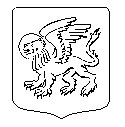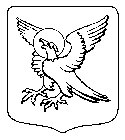
Saint Dominic
contemplating the Scriptures
Comments have been prepared by Chris Haslam using reputable commentaries, and checked for accuracy by the Venerable Alan T Perry. While not intended to be exhaustive, they are an aid to reading the Scriptures with greater understanding.
Comments are best read with the lessons.
Feedback to
is always
welcome.
Lessons for this week from the Vanderbilt University web site
PDF files for use with Acrobat Reader:
Get Adobe Acrobat Reader
Adobe Acrobat Reader

As witnesses to the events of Jesus life and death became old and died, the need arose for a written synopsis. Tradition has it that Mark, while in Rome, wrote down what Peter remembered. This book stresses the crucifixion and resurrection as keys to understanding who Jesus was. When other synoptic gospels were written, i.e. Matthew and Luke, they used the Gospel according to Mark as a source. Mark is most probably the John Mark mentioned in Acts 12:12: his mother's house was a meeting place for believers.
Mark 11:1-11
Previous chapters tell us that Jesus’ journey to Jerusalem has started in Galilee. After reaching Jericho, he and his disciples turn west, passing south of the “Mount of Olives”. Both “Bethphage” and “Bethany” were on the slope of the mountain, across the Kidron Valley from Jerusalem, so which “village” (v. 2) is intended is unknown.
A vision in Zechariah 9:9 prophesies that a king will come to deliver Israel “humble and riding on a donkey”, Jesus borrows “a colt” (a young equine animal, probably a donkey) for his entry into Jerusalem. While Christians later took “The Lord” (v. 3) to be Christ, it is more likely that the boss is meant. In v. 6, we read that the two disciples follow Jesus’ directions, and are successful. The “leafy branches” in v. 8 are not said to be palm fronds. Fronds were traditional for other festivals, but not for Passover. “Hosanna! Blessed is the one who comes in the name of the Lord!” (V. 9) is from Psalm 118:26. “Hosanna” literally means save we pray but here it is a greeting of homage. The crowd seeks, and expects, “the coming kingdom” (v. 10) to be an earthly one, free from Roman control. The “highest heaven” is where God dwells.
To visit the Temple (v. 11) upon arrival in the city is normal, but Jesus does it alone. He has no comment on what the crowd has shouted. His kingdom will be established through rejection, death, and resurrection.

John is the fourth gospel. Its author makes no attempt to give a chronological account of the life of Jesus (which the other gospels do, to a degree), but rather "...these things are written so that you may come to believe that Jesus is the Messiah, the Son of God, and that through believing you may have life in his name." John includes what he calls signs, stories of miracles, to help in this process.
John 12:12-16
The “next day” (v. 12) after Mary has anointed Jesus with oil usually applied before burial, “the great crowd” of his supporters among the pilgrims visiting Jerusalem for the Passover hear that Jesus is coming. So, as when Simon freed the land from foreign control in 140 BC, the crowd goes out to greet Jesus with “branches of palm trees” (v. 13, 1 Maccabees 13:51).
Crowds waved palm fronds while singing Psalm 118 at the Feast of Tabernacles. Here they shout a verse from it, to which they add “The King of Israel” (v. 13), showing that they expect Jesus to restore the kingdom of David. “In the name of” means with the authority of. “Hosanna” means please save or save us.
In John, unlike in the other gospels, the crowd takes the initiative: “they ... went out to meet him”; Jesus’ response is simply to sit on “a young donkey” (v. 14). A war-like king would have ridden a horse. Thus he fulfils an expectation from the Old Testament: v. 15 is taken from Zephaniah 3:16 and Zechariah 9:9. A “donkey’s colt” is its foal. “His disciples did not understand” (v. 16) how Jesus could be a king in any sense if he was not the messiah, an ideal earthly king, as popularly expected. After the crucifixion, resurrection, ascension, and Pentecost they made sense to them
Psalms
Psalms is a collection of collections. The psalms were written over many centuries, stretching from the days of Solomon's temple (about 950 BC) to after the Exile (about 350 BC.) Psalms are of five types: hymns of praise, laments, thanksgiving psalms, royal psalms, and wisdom psalms. Within the book, there are five "books"; there is a doxology ("Blessed be ... Amen and Amen") at the end of each book.
Psalm 118:1-2,19-29
Vv. 1-2 are a call to thanksgiving: God’s mercy, his “steadfast love”, is everlasting. May “Israel” (v. 2) (and) “those who fear the Lord” (v. 4) proclaim this! Vv. 5-13 say that, when the psalmist (possibly the king) was in distress, he “called on the Lord”, who heard him. With God on his side, there is nothing to fear; trusting in God is better than trusting in humans. Surrounded by his enemies, “in the name of the Lord I cut them off” (v. 11), with God’s help. V. 15 recalls Exodus 15:2a, part of Israel’s classic victory song sung by Moses and the Israelites after crossing the Reed (Red) Sea. The “glad songs” are heard in the Temple, the community of the faithful. The psalmist expects to live to old age (v. 17); he will proclaim God’s acts of power. He has suffered greatly at God’s hands, as a discipline, but God has preserved his life. He seeks entrance to the Temple (“gates of righteousness”, v. 19) to give thanks; only the godly may enter therein (v. 20). V. 22, possibly based on an ancient proverb, may speak of the king’s rise to power or of his victory. On this day (v. 24) God has either saved his people or punished the ungodly – or both. This is a time for rejoicing. In v. 26, all proclaim he who was “rejected” (v. 22), but is now God’s chosen ruler. Note the progression in vv. 26-29: “festal procession”, “extol” (raise up), everlasting love.
© 1996-2022 Chris Haslam